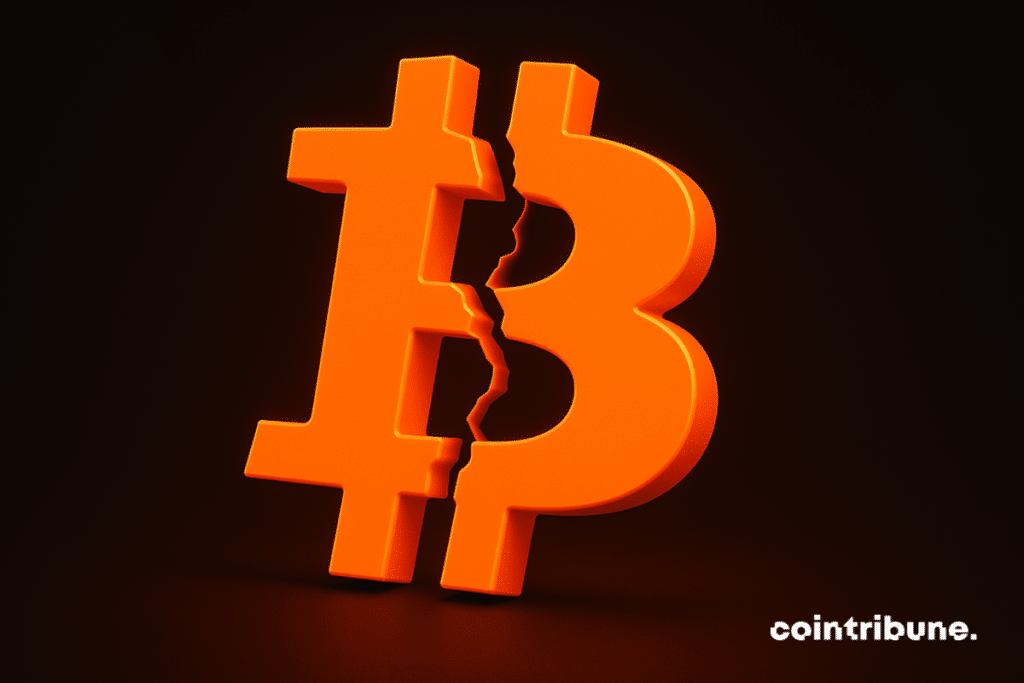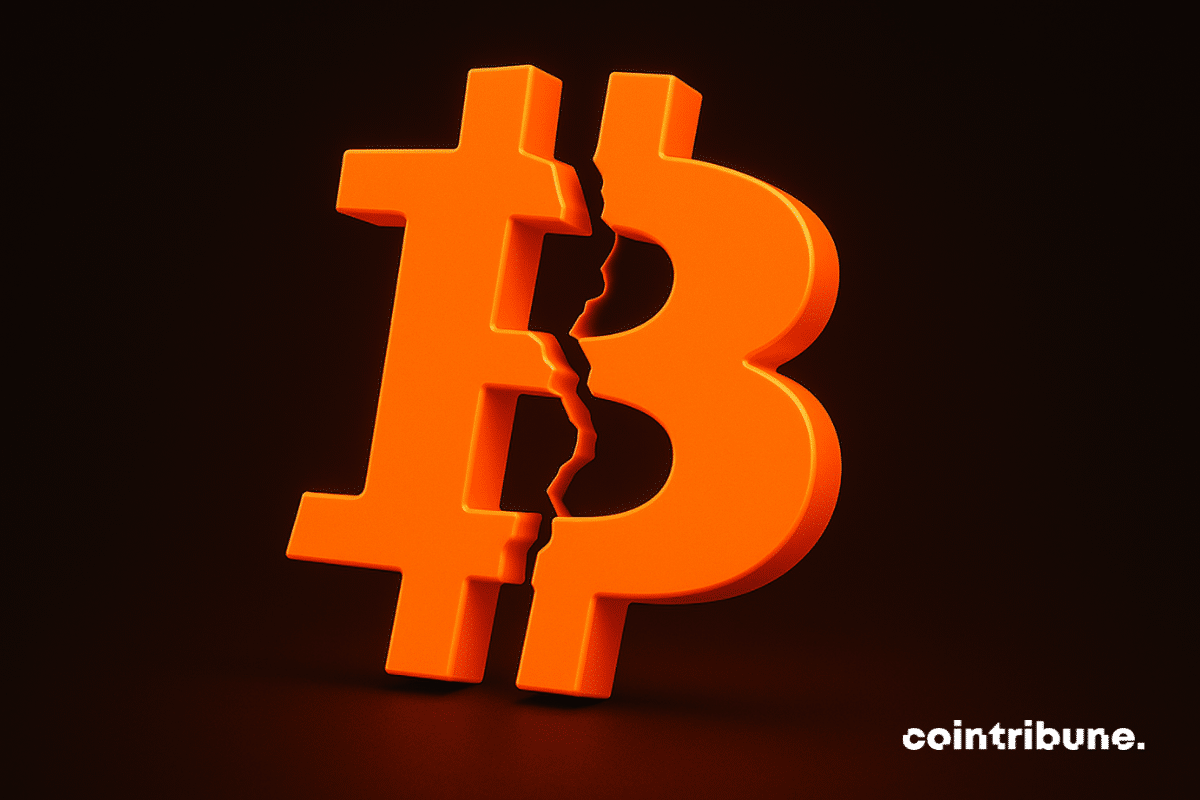An abusing change in philosophy works in Bitcoin developers.

In short
- Brachi in front of conciliatory proposals of bitcoin core to spam.
- In the heart of controversy: OPCODE OP_RETURN.
- Who benefits from a crime and what to do with the bitcoin core stubborn?
No_return
The bitcoin core is again under the fire of criticism. French developer Antoine Point threw the sidewalk into the pond by proposing to remove the limit of any data (SPAM) that can be inserted into the transactions “legally”.
Here in gasoline his design (shortened version) is that he describes in more detail on his blog:
By default, the bitcoin core spreads and undermines only transactions containing as much op_return as possible, which does not exceed 83 bytes. (…) However, some can do this limit. Therefore, I propose to delete to stop the stimulation of more harmful data inserting data (…).
Antoine poinsot
Let’s start with an explanation of what is “op_return”. It is an OPCODE for correct inserting any data into the transaction. This “official” method offers a limited space of 83 bytes to do so.
OPCODE OP_PRETURN transactions have this specific that they generate UTXOS, can no longer be spent (indiscriminate output). Use op_return is used to report nodes that may not remember the UTXO transactions.
(We call UTXO small pieces of code (“scripts”) that mathematically binds bitcoins to BTC addresses (addresses are coding public keys).).
The vase overflows when developer Peter Todd suggested that the nodes must configure the OP_RETURN limitation:
Also remove the possibility of configuration -Datacarriersize (…). In any case, this limit is easily bypassing by direct submission to minors (for example Mara Slipstream) or certain insertion techniques.
Peter Todd
We will explain everything, do not panic.
Data non grata
What exactly are we talking about? What are this “any data” that causes so much ink flowing?
We usually talk about “inscriptions”. The best known are “Ordinals”. These are usually JPEG images that squat inside transactions (P2TR). There are also signs, even more harmful. These data store in the form of public keys and generate a huge amount of UTXO (Baremultisig).
All these inscriptions have a common circumvent OP_return to escape its limits, which is not without consequences. While the UTXO set weighed only 4 GB in front of the inscription fashion, today we are 12 GB. Half UTXO contains less than 1000 SAT, ie spam.
This growth threatens decentralization because it is more expensive to install a knot (memory, RAM, IBD, etc.). Another disadvantage is to interfere with the legitimate use of the network, and to perform monetary transactions.
Now they clarify the expression -Datacarriersize. This is the name of the configuration parameter defining the OP_RETURN limit. By default, this limit is set to 83 bytes in recent versions of the Bitcoin core.
Here, Peter Todd affects what is called “political rules”. These rules allow you to filter transactions to prevent them from spreading to minors to be added to the block. The aim is to prevent certain attacks by rejecting the service (back). For example, the bitcoin core does not promote transactions weighing more than 100,000 vocals.
(Mempool (memory contraction) contains valid transactions that are waiting to be included in the block. Each node to your own Mempool and the actual configuration of the filter.)
Now that the bases are laid, let’s go to the heart of things. It’s been two years since Luke Dashjr developer recommends filtering transactions containing inscriptions.
The problem, the small conclave of developers at the head of the bitcoin core refuses.
Know how to limit the breaking
The Bitcoin core justified its passivity by advanced that filters that will end up bypassing the financial interests of minors. This is also done with the “Slipstream” system of a smaller marathon.
Slipstream allows you to circumvent the network nodes by sending transactions (which would otherwise be filtered) directly in the Mempool marathon.
Certainly, but this service is not free. The more expensive the registration, the less it will be. Everything is good to take to limit the breakage. Not to mention that the marathon undermines less than 5 % of blocks.
It is very simple, only 30 OP_TURN transactions out of 7 million exceeded the limit of 83 bytes of the year. This represents a success rate of 99.9957 % for an anti-spam filter limited to 83 bytes.
Let’s go back to Peter Todd now. Its proposal is disrupted because it looks like a surrender against the spam industry. Especially since the abolition of OP_RETURN limits, it will most likely have no positive impact on spam.
For what? For the right and simple reason that new insertion techniques are four times cheaper than OP_Preturn because they use a “witness”.
This huge discount is associated with a soft fork of Segwit, which brought blocks from 1 MB per 1 VMO. “V” means “virtual”.
Segwit, in the origin of evil
Segwit is a fruit of a compromise of “Blocksize War”, an episode that is worth exploring. To be clear, the Segwit allowed to increase the size of the blocks from 1 MB to 4 MB.
This is due to the fact that segwit transactions are divided into two different sections. The byte of the first section counts as weighing 4 vocotes, while the bytes of the witnesses weigh a single voctet.
The block containing 1 MB of conventional transactions (without segwit) thus weighs 4 VMO. The 4 MB block containing one transaction bearing 4 MB image for a witness weighs 4 VMO.
The problem is that no one could predict (to tell the truth, if …) that the witness would be used by spammers. The creators of Segwit thought that the witnesses section would only contain legitimate ECDSA signatures and that the blocks would reach a maximum of 1.5 to 2 MB.
Today, most spam is placed in the testimony of P2TR transactions. These scripts are not intended to perform: serve only as a storage for any data (images, texts, JSON, etc.), up to 4 MB per block.
Who benefits from a crime?
The start of the answer may be due to the fact that the filters slow down the spread of blocks containing OP_RETURN exceeding the limit of 83 bytes. Minor Marathon therefore has a financial interest in what this limit is removed.
This would also benefit the Citrea project by Jameson Lopp. Cypherpunk was also among the first to support Peter Todd’s proposal. In this respect, be aware that the bitcoin mechanic (CTO at the Ocean pool) was expelled from Bitcoin Github for emphasizing this conflict of interest. Ironic censorship …
We will end with a hammer that Bitcoin is a payment system. Facing other uses harmful to network decentralization is a difficult pill. In the face of the deaf dialogue, which has settled with the bitcoin core, more and more people migrate to other implementations such as bitcoin nodes.
Bitcoin nodes is a modified version of the Bitcoin core led Luke Dashjr. It is an alternative customer for a bitcoin network. It offers additional functions and corrections that the core developers refuse to make.
The next step is to reduce food to organizations like @opensas, @bitcoinbrink, @hrf and also remove their funds from the ETF, which sponsor dictators. Hopefully, controversy will be enough to convince the bitcoin core to do nothing.
Here for English speakers long Tirade from bitcoin mechanics to fully understand where we are:
If you are still there you will appreciate this article Bitcoin and quantum threat.
Maximize your Cointribne experience with our “Read to Earn” program! For each article you read, get points and approach exclusive rewards. Sign up now and start to accumulate benefits.
Reports of bitcoins and geopolitics.







